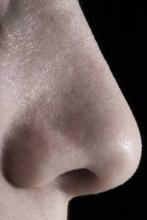More than a third of patients seeking cosmetic nose surgery have symptoms of body dysmorphic disorder, according to a preoperative study of 226 patients at a Belgian university hospital.
"This study shows that the prevalence of body dysmorphic disorder symptoms in a cosmetic rhinoplasty population is high and that the severity of symptoms has a clearly negative effect on daily functioning," wrote Dr. Valerie A. Picavet of University Hospitals Leuven (Belgium), and her associates.
The link between body dysmorphic disorder (BDD) and cosmetic surgery seekers is well documented (Body Image 2004;1:99-111; Br. J. Plast. Surg. 2003;56:546-51), but Dr. Picavet and her team focused on its prevalence among rhinoplasty seekers.
In collaboration with the psychiatric department of University Hospitals, the team conducted preoperative interviews with patients at a referral center for nasal disease. These patients were over age 16 years and seeking rhinoplasty for aesthetic and/or functional reasons. The same interviews were conducted in a 65-person control group not seeking rhinoplasty (Plast. Reconstr. Surg. 2011;128:509-17).
The researchers used the DSM-IV definition of BDD by which individuals have a preoccupation with an imagined or slight physical defect.
Individuals with this disorder devote a significant amount of time each day focused on their perceived defect, have daily distress about this concern, and suffer social impairment as a result of their preoccupation.
For this study, patients were given questionnaires to establish a clinical profile and evidence of BDD symptoms. They were asked to evaluate their nasal shape on a visual analog scale. In addition, they were given the Yale-Brown Obsessive Compulsive scale modified for BDD to rate BDD-related thoughts and behaviors. Social impairment was assessed with the Sheehan Disability Scale and the Derriford Appearance Scale.
The researchers accounted for the possibility that not every nasal shape defect is imaginary by developing a scoring system in which patients' noses were evaluated by two independent observers.
Each patient's nose was rated on a scale from severely deformed to zero deformity. But patients' evaluations of their own noses did not match these evaluations by the observers. No correlation was found between subjective and objective assessments of nasal deformity.
In all, 74 patients (33%) had at least moderate symptoms of BDD. These individuals scored 16 or higher on the Yale-Brown scale. There were no patients with the most extreme BDD symptoms. Among the control group, only one patient (2%) had moderate or higher BDD symptoms.
The reason patients gave for seeking rhinoplasty had a bearing on their likelihood of their having BDD symptoms. Among those seeking surgery for functional reasons, only 9 (12%) had moderate or higher symptoms of BDD. Among those seeking rhinoplasty for aesthetic reasons, 65 (43%) had moderate or higher symptoms of BDD. The correlation between Yale-Brown score and reason for seeking surgery was statistically significant (P < .001).
The correlation between having a previous rhinoplasty and BDD symptom severity also was statistically significant (P = .003). For surgeons screening rhinoplasty patients, a primarily aesthetic motivation or a history of previous rhinoplasty may be a red flag indicating that the patient should be carefully assessed for symptoms of BDD.
The study also found a statistically significant relationship between number of BDD symptoms and degree of social impairment and distress in these rhinoplasty-seeking patients. There was also a positive correlation between patients' Yale-Brown score, and psychiatric history and comorbidities.
The researchers conclude, "Thorough preoperative evaluation, including informing about psychiatric history, especially depression, should therefore be included in the preoperative assessment of cosmetic surgery patients, as it might be an indicator for latent body dysmorphic disorder."
Dr. Picavet and her team reported no financial interest in relation to this study and no outside funding was received.


